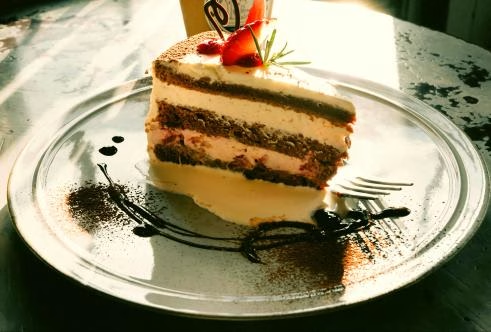Sugar can enhance flavor and is an essential seasoning in cooking and baking. It can transform flavors into sweet and savory flavors, but is its sole function and use in cooking and baking limited to flavor?
Sugar adds more than just sweetness.
Pastry chefs tend to be disciplined, while savory chefs are downright anarchic. The reason is simple: if you stray too far from a clearly labeled recipe, you risk a disaster. Sugar in baked pastries not only adds sweetness but also serves the following functions:
It acts as a stabilizer.
When making meringue, air is beaten into the egg whites. The proteins in the egg whites form a thin framework that supports the air bubbles. Sugar stabilizes these air bubbles, making it less likely that you’ll overbeat the egg whites.
Sugar also acts as the structural engineer of the meringue, preventing its structure from collapsing. Sugar dissolves in the water within the bubble walls, forming a supporting, protective syrup.
It provides texture.
Examples include unrefined cane sugar (Terbinado) and Demerara sugar. Furthermore, when food is baked in the oven, water evaporates from the surface, causing the sugar to recrystallize, creating a crunchy texture, such as the crispy, crumbly crust of muffins and the crispy layer on the top of brownies that I pick up and eat.
It makes desserts moist and tender.
Sugar is hydrophilic, which is a fancy way of saying it “really loves water.” Without enough sugar, all the water in a dessert says goodbye. In other words, water and sugar are inseparable and neither can exist without the other.
Because of this intertwined relationship, if there isn’t enough sugar in the batter, proteins and complex starches will greedily compete for water. Gluten needs water to create a good baked product. Want a donut with the same texture as a bagel? Simply reduce the amount of sugar in the recipe.
It acts as a leavening agent.
Sugar enters the mixture of fat, eggs, and other liquids, creating thousands of tiny air bubbles. These bubbles expand, giving the baked good some puffiness. Without them, prepare for a miserable, flat, and unrefined cookie. Poor miserable, flat, and unrefined cookie…
It aids browning and deepens the flavor through caramelization.
Think about the flavor difference between a marshmallow straight from the bag and one that’s been toasted.
What about swapping a “solid” sugar like granulated sugar for a liquid sugar like maple syrup or honey? That can be a bit tricky.
Not only does this substitution significantly change the flavor, but maple syrup and honey are both sweeter than granulated sugar, so you’ll need less. For a cup of granulated sugar, you only need 1/2 to 3/4 cup of honey or maple syrup.
Keep in mind, too, that this will add liquid not originally planned for in the recipe, so you’ll need to reduce the amount of other liquid in the recipe by the amount of sweetener you’re replacing—a rough estimate is to subtract 25% of the amount of sweetener you’re adding.
In addition, honey and maple syrup are slightly acidic, so you’ll need to add a little (or slightly more) baking soda to neutralize them. Also, honey and maple syrup caramelize more quickly than sugar, so the oven temperature may need to be lowered as needed.
Reduce Sweetness: How to Fix Overly Sweet Dishes
- Add or Dilute: Distribute the sweetness across a larger portion of the ingredients. Add water, more meat, or more vegetables.
- Add acid to counteract the sweetness. Add a little sour cream or yogurt (both are sour) to sweet potato soup or borscht. If you don’t want a strong acidic flavor in your dish, use distilled white vinegar or citric acid.
- Add heat, such as chili peppers or other spicy ingredients. The sweet and spicy flavors will balance each other out.
- Adding oil coats the taste buds and suppresses the perception of sweetness.
- Avoid adding more salt, as salt intensifies the perception of sweetness.


Leave a Reply